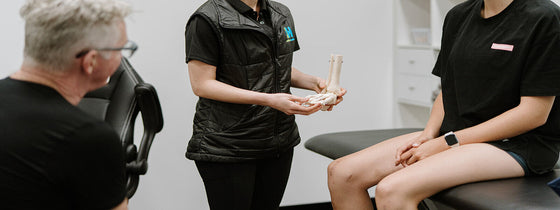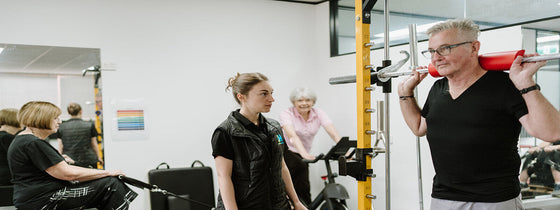Despite your best efforts to prevent or delay a hip or knee replacement, the time may come that you are faced with the big decision to treat yourself to a new joint. So you’ve bitten the bullet, you’re booked in for your operation – cue PANIC MODE!! Take a deep breath – it will be okay! Thousands of these surgeries are done each year across the nation with great success. So what can you do in the coming weeks to get yourself prepared and ensure you have the best result and the least painful recovery?? The magic word is prehabilitation.
Prehabilitation involves a physiotherapy-led exercise and education programmes to improve and maintain your strength, function, range of movement and general fitness leading up to your surgery. A four to eight week program is ideal, and this can often be successfully done in a group setting. It has been shown to reduce pain levels in the first four weeks after surgery, and have improved function in the first six to eight weeks with earlier return to day to day activities like stair-climbing. These benefits will improve your quality of life after your surgery, and can also lead to a shorter stay in hospital. Wins all round!
For total knee replacement patients, heavy resistance training pre-op has been found to improve neuromuscular activation (the way your brain and nerves control your muscles) and the range of movement of the knee prior to surgery. The more you can bend your knee pre-op has also been found to lead to greater knee bend after surgery, which is hugely important for activities like kneeling, gardening, and getting in and out of low chairs and cars.
General fitness and managing your weight is also an important consideration when facing a hip or knee replacement. Many studies have found that a 10% reduction in body weight can significantly improve the pain and inflammation associated with osteoarthritis of the hip and knee. This would also improve your ability to recover after surgery.
So if you’re booked in for your new joint, or are facing the prospect of surgery, don’t wait – get optimally prepared! Get in touch with the team of expert physiotherapists at OHL today for some advice and to get you started on your prehabilitation journey, our fantastic Dietitian Emily will also be able to help you with some great dietary advice for weight loss if needed.

OHL is integrating a new athletic screening assessment into its practice to further enhance our community's sporting ability. This screening assessment combines range of motion, strength profiling, force deck analysis, and subjective training status to give athletes a comprehensive performance snapshot. By establishing a baseline and identifying key areas for improvement, we can tailor your training to enhance performance, provide insight on key metrics, and stay resilient throughout the season. Whether you're preparing for preseason, managing midseason demands, or simply aiming to train smarter, this assessment delivers the data-driven insights you need.

If you're experiencing back or neck pain with neurological signs and symptoms, a thorough neurological examination is crucial for accurate assessment and effective treatment. In this Optimal Tip learn more about what we mean by completing a neurological exam!

Squats, deadlifts, and calf raises are key movement patterns that should be part of every strength and conditioning program—regardless of age and activity level. These functional movements support joint health, improve posture and balance, and reduce the risk of injury while building strength where it matters most.